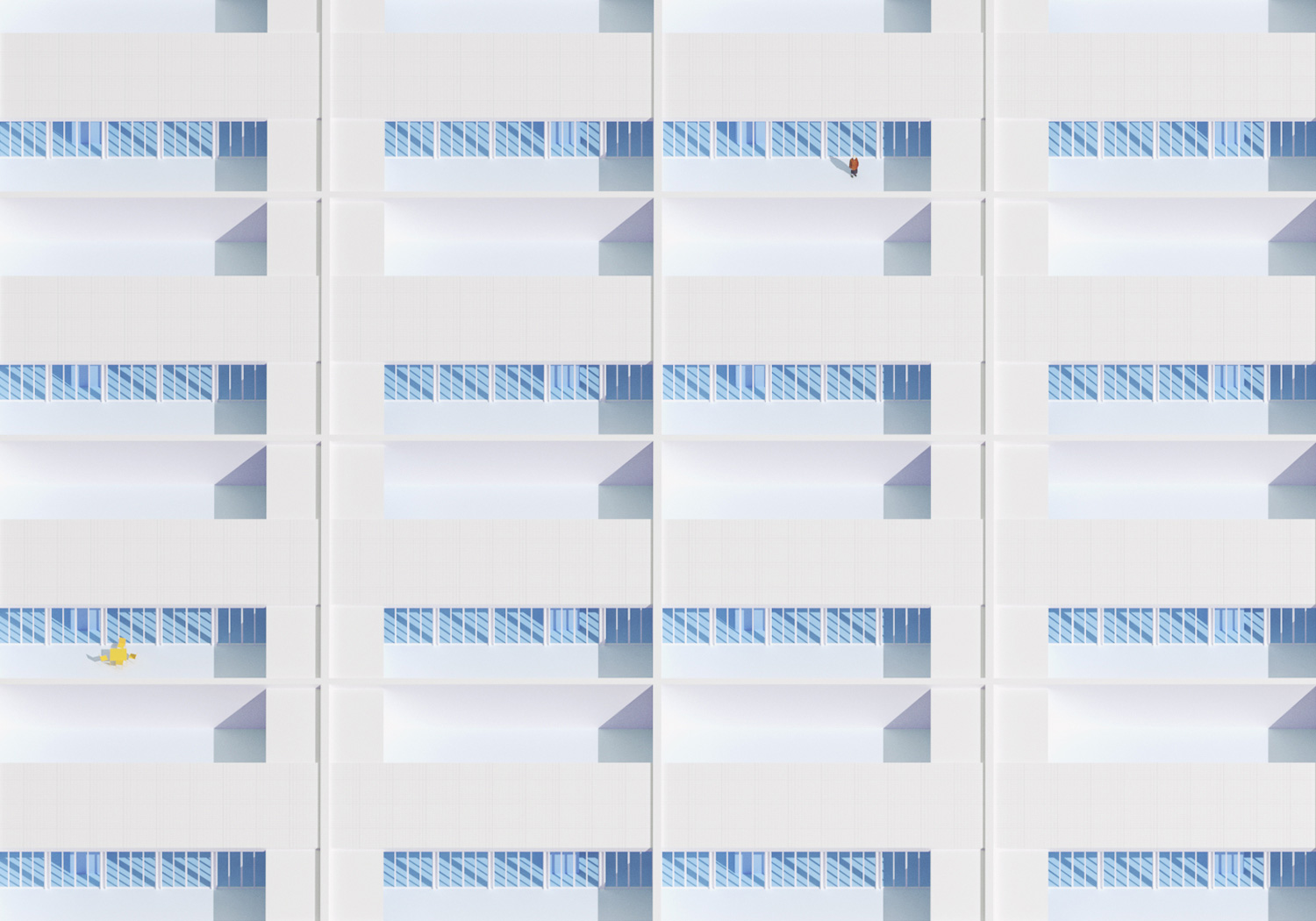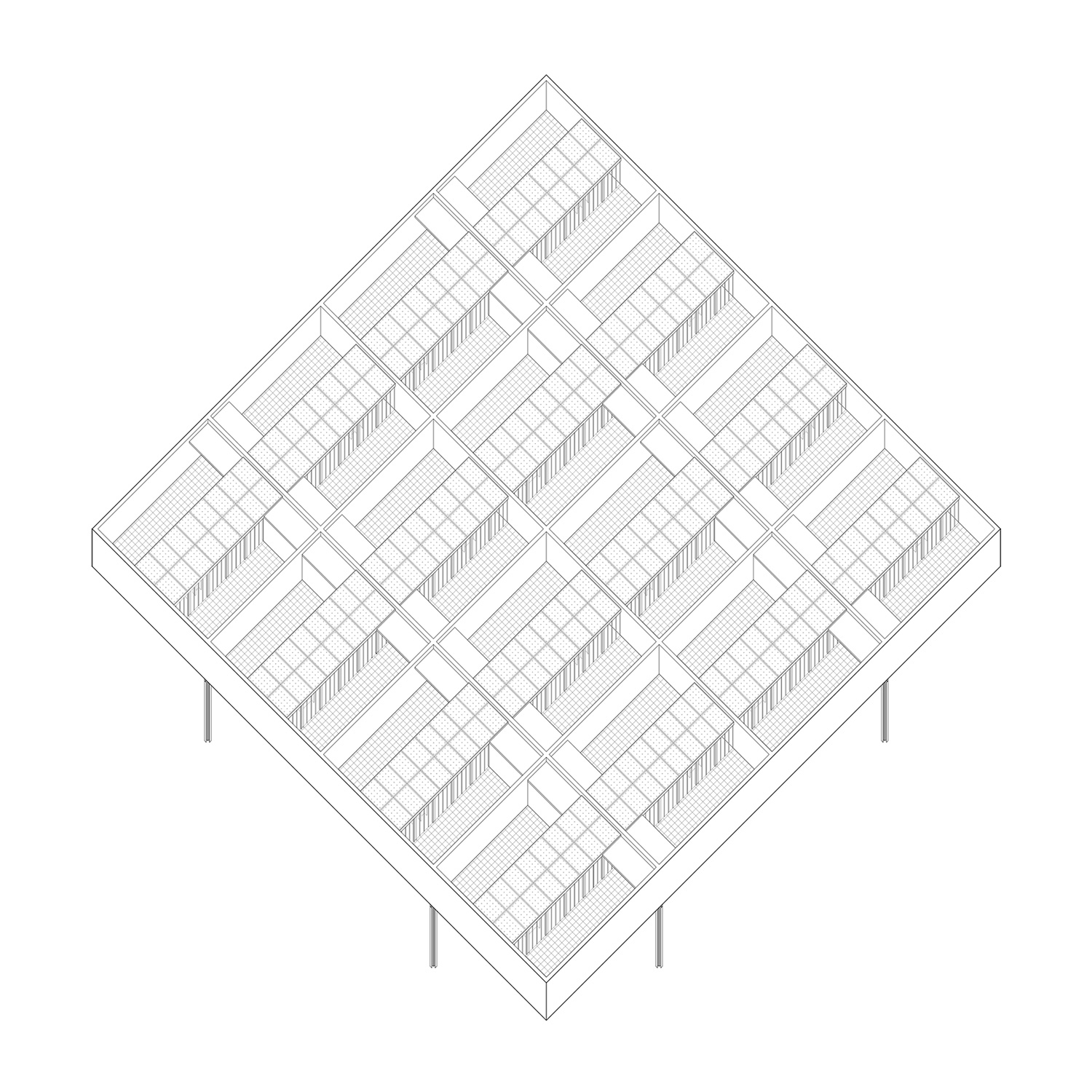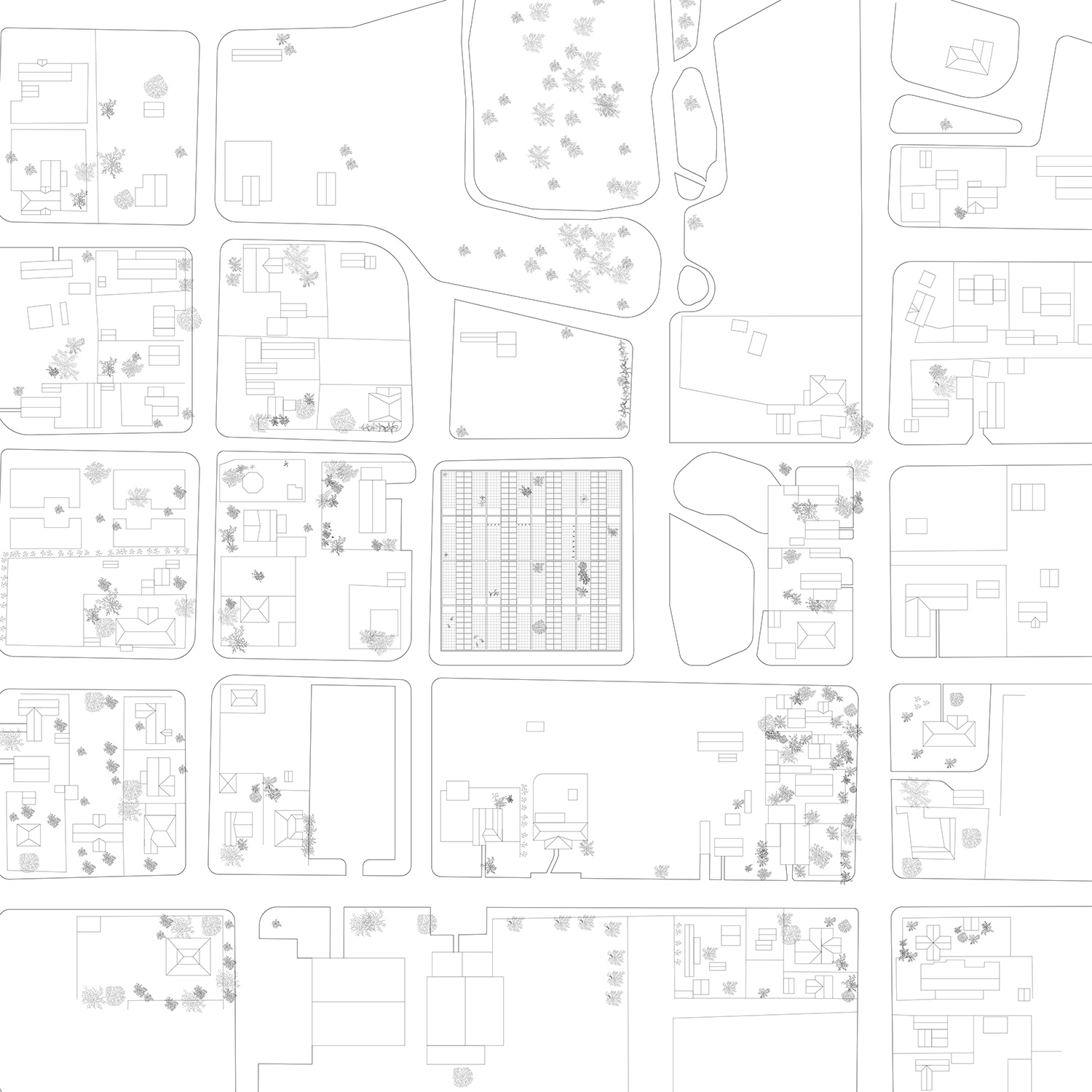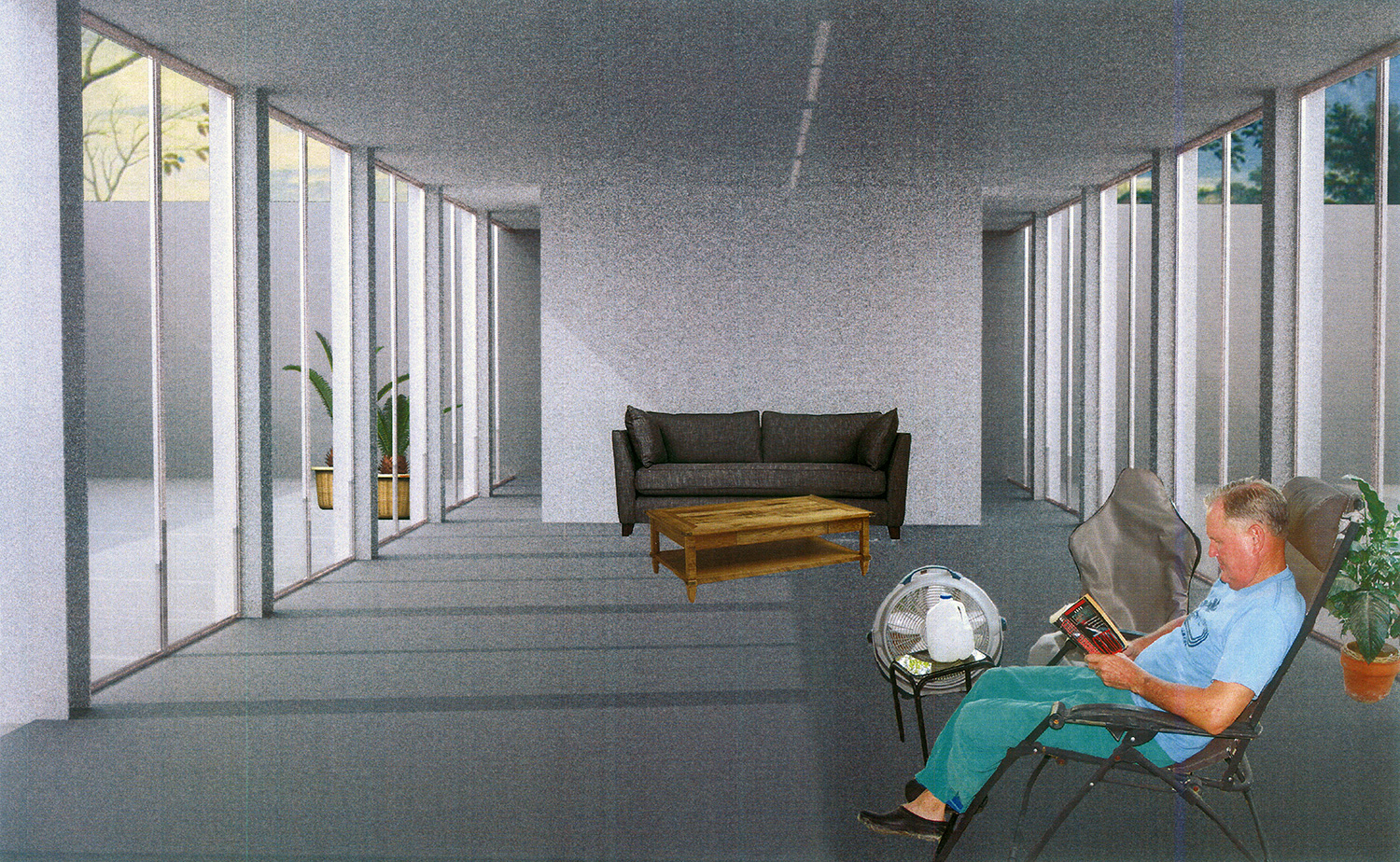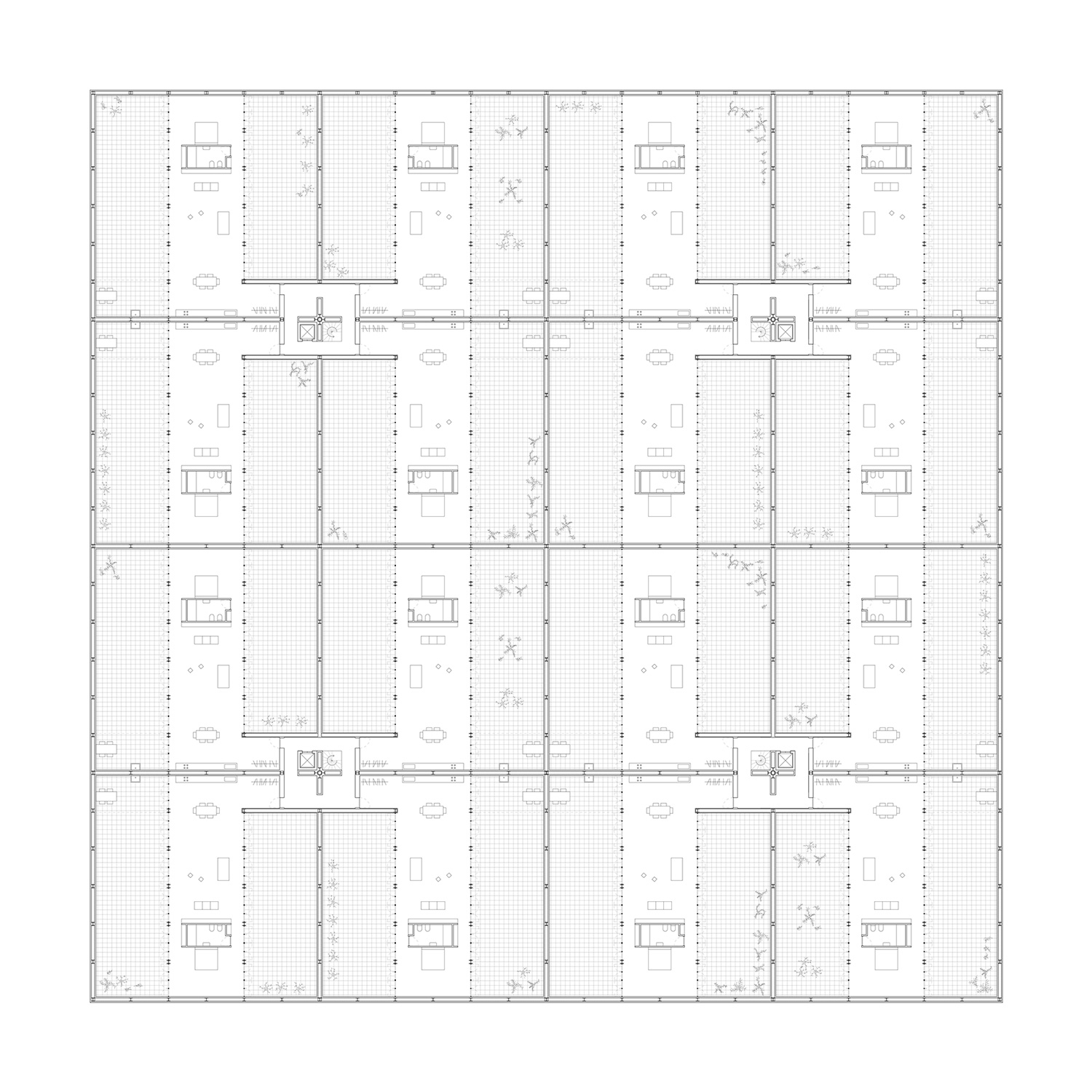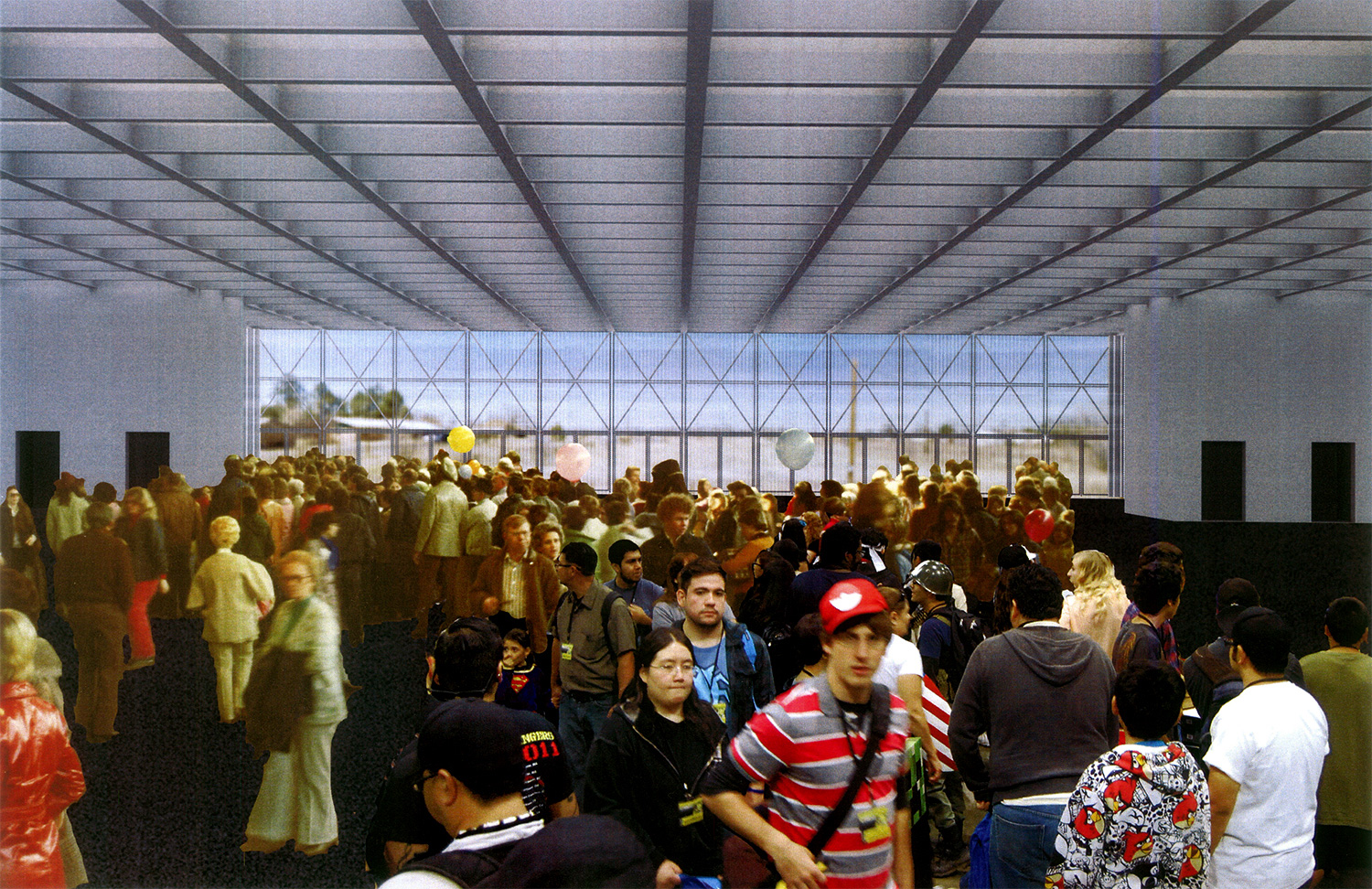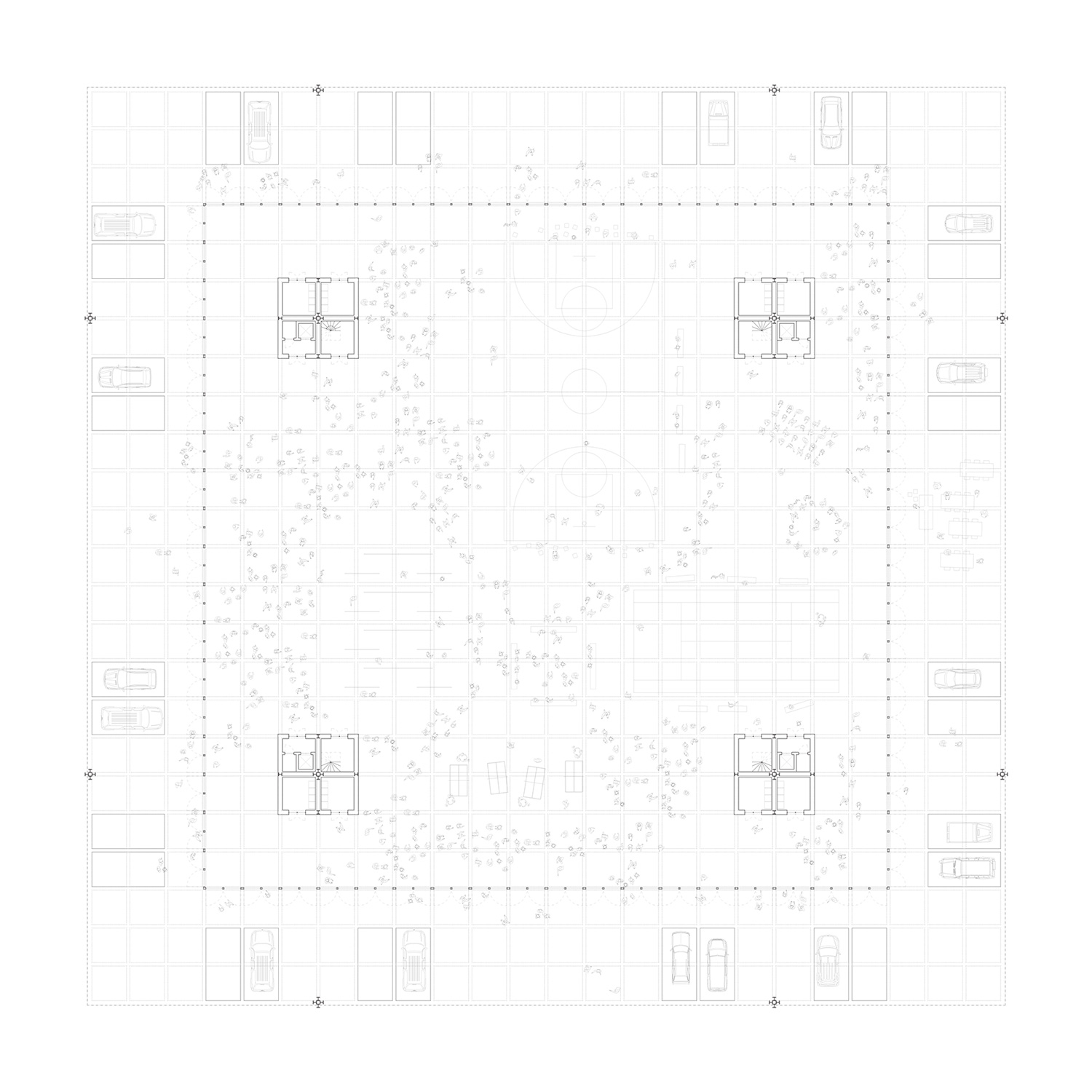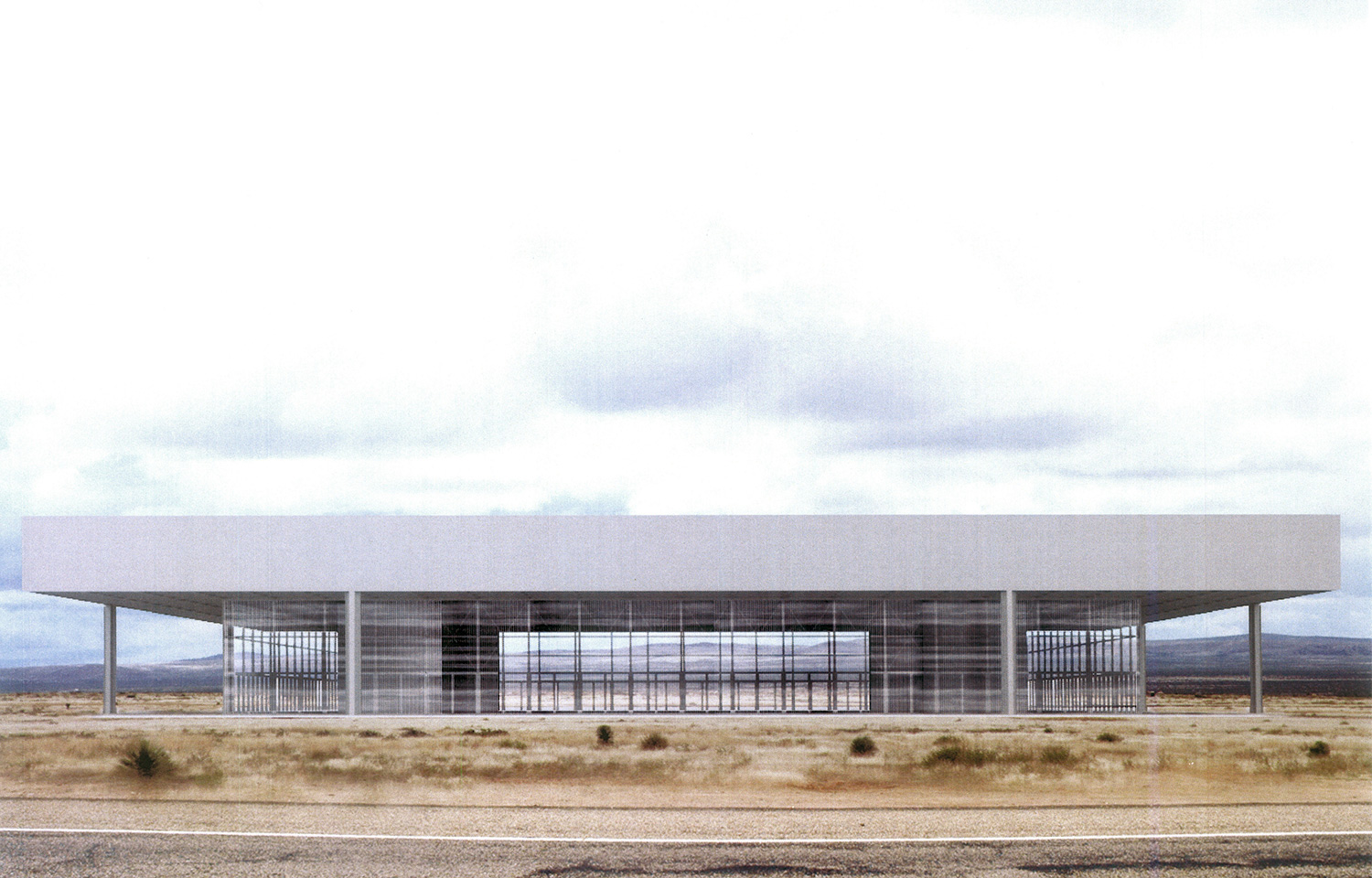☉ 16 family-housing Marfa is a proposal by UHO developed in 2014. It is located in Marfa United States in a desert and urban setting. Its scale is large. Key material is metal.
Marfa is an atypical location for a housing project. Indeed, it is home to extreme variations in temperature, but most noticeably it hosts one of the most progressive communities in the United States.
Could a prototypal housing project rely on the particularities of this specific locality to enhance the concept of housing itself?
In our view, housing should:
– allow for minimal disparities in the tenants’ living conditions
– act as an integral part of the City.
In other words: each housing unit should be as equivalent to the others as possible and the housing project should contribute to the public space.
Rental housing – Backyard
To attain equivalence between housing units, each one of them should possess the same features in terms of distribution, views, orientation, light efficiency, etc.
One simple solution is the grid scheme — or so-called Manhattan plan — where circulation defines housing units. Every unit is surrounded by four “streets”. However, it is not a very efficient one: distribution takes up a very large portion of the plan and shared space is merely a circulation area.
Our approach is different. We decide to make one sacrifice: the view towards the landscape. We admit it is not a mundane feature, but by doing so, we are able to pack the housing units tightly and to enhance the overall project.
Our strategy is to define square (20 m x 20 m) parcels. Together, they form an extendable matrix. Each of them also hosts two “backyards” shedding light on the two interior façades of this encased housing unit.
Every group of four units is served by a distribution kernel. These contain a staircase, an elevator, a laundry room, a garbage collection unit and common storage. They also host technical networks (plumbing, electricity, etc.) and serve the general structural stability of the building.
To avoid any kind of disturbance of the plan, any unbalancing of the parcels, access is displaced underneath the living area. We lift up the entire plan, liberating the ground floor for public use.
Public space – Frontyard
The frontyard is given up as such. Instead its purpose is transferred to pure public space while centralized on the ground level.
A generous (7.5 m ceiling) space is protected from the wind and is suitable for any activities ranging from cultural gathering to sporting leisure. Our intent is to leave this public space as undefined as possible. It is Marfa’s community which will be responsible for its management. It is lit up to 24/7 thanks to the solar panels placed on the roofs of the housing units.
The building is circled by parking lots, individual garages seem like a waste of space and resources. From the exterior, one simply sees an ordinary building: an 80 meters by 80 meters block. Up to 8 meters, the façade is cladded with cheap polycarbonate modules. The 4 upper meters are made of blank foamed concrete walls encasing the steel structure.
Copying Mies
After setting the objectives and producing the first sketches, striking similarity appeared between the general design of our project and Ludwig Mies van der Rohe’s Neue Nationalgalerie. We decided to fully assert the ressemblance. He had solved every structural problem relating to lifting a great mass without saturating the ground floor with pillars, and we would reuse his strategy, simply using more modest materials and finishing.
Our intent is to focus primarily on social enhancement. The formal proximity to a modernist building is simply a testimony to our retreat from formal individuality.
